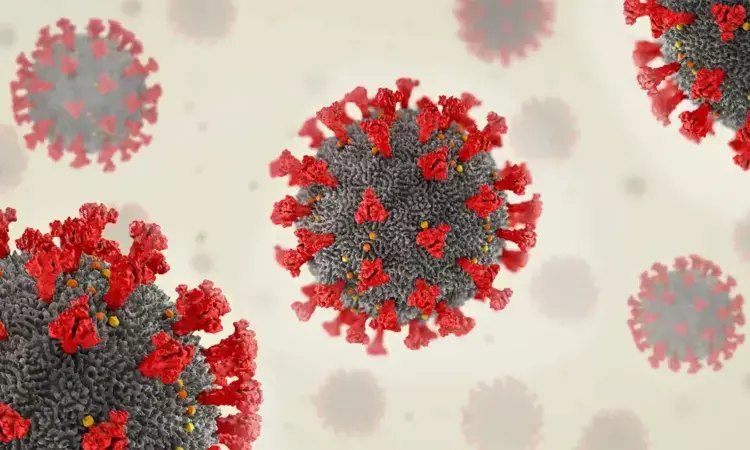- Home
- Medical news & Guidelines
- Anesthesiology
- Cardiology and CTVS
- Critical Care
- Dentistry
- Dermatology
- Diabetes and Endocrinology
- ENT
- Gastroenterology
- Medicine
- Nephrology
- Neurology
- Obstretics-Gynaecology
- Oncology
- Ophthalmology
- Orthopaedics
- Pediatrics-Neonatology
- Psychiatry
- Pulmonology
- Radiology
- Surgery
- Urology
- Laboratory Medicine
- Diet
- Nursing
- Paramedical
- Physiotherapy
- Health news
- Fact Check
- Bone Health Fact Check
- Brain Health Fact Check
- Cancer Related Fact Check
- Child Care Fact Check
- Dental and oral health fact check
- Diabetes and metabolic health fact check
- Diet and Nutrition Fact Check
- Eye and ENT Care Fact Check
- Fitness fact check
- Gut health fact check
- Heart health fact check
- Kidney health fact check
- Medical education fact check
- Men's health fact check
- Respiratory fact check
- Skin and hair care fact check
- Vaccine and Immunization fact check
- Women's health fact check
- AYUSH
- State News
- Andaman and Nicobar Islands
- Andhra Pradesh
- Arunachal Pradesh
- Assam
- Bihar
- Chandigarh
- Chattisgarh
- Dadra and Nagar Haveli
- Daman and Diu
- Delhi
- Goa
- Gujarat
- Haryana
- Himachal Pradesh
- Jammu & Kashmir
- Jharkhand
- Karnataka
- Kerala
- Ladakh
- Lakshadweep
- Madhya Pradesh
- Maharashtra
- Manipur
- Meghalaya
- Mizoram
- Nagaland
- Odisha
- Puducherry
- Punjab
- Rajasthan
- Sikkim
- Tamil Nadu
- Telangana
- Tripura
- Uttar Pradesh
- Uttrakhand
- West Bengal
- Medical Education
- Industry
How long should kids isolate after they've contracted COVID-19?

COVID-19 Case at SMCH Raises Concerns
School policies that require students with COVID-19 to stay out of the classroom for five days are more than sufficient. That's because children infected with the Omicron variant remained infectious for a median time of three days after testing positive for the virus, according to a study by the USC Schaeffer Center for Health Policy & Economics and Stanford University.
“We're basically saying five days is more than sufficient; public-health and education leaders may consider shorter durations,” said co-author Neeraj Sood, Director of the COVID-19 Initiative and a senior fellow at the USC Schaeffer Center.
The study found the median time of infectivity was three days, with 18.4% of children still infectious on day five and 3.9% infectious on day 10. The study also found no association between how long children were infectious and whether they were vaccinated, suggesting return-to-school policies may not need to discriminate by vaccine or booster status.
The study, published in JAMA Pediatrics, seeks to inform policymakers who grapple with how long children must isolate when they contract COVID-19. Such self-isolation policies, aimed at halting the spread of the virus, can negatively interrupt children's education. The rules – which have been implemented in school districts from New York City to Los Angeles-have been guided by little data so far, the authors said.
“We want to protect the other children in the school who could potentially get infected, but at the same time, we don't want to disrupt education for the child who is infected, given the amount of disruption that's already happened,” said Sood, who is also a professor at the USC Sol Price School of Public Policy. “The duration of infectivity is an important parameter into figuring out what the optimal duration of self-isolation should be.”
Researchers examined nasal swabs from COVID-infected children
Researchers partnered with a virus testing company and examined nasal swabs from 76 children in Los Angeles County who were between the ages of 7 and 18 and tested positive for COVID-19. Survey participants provided samples during five home visits over a 10-day period, and samples were examined in a lab to find evidence of cell death, a sign of infectivity. All participants were infected with the Omicron variant of COVID-19.
“We wanted to capture how infectivity changed over the 10-day window,” said lead author Nikhilesh Kumar, a Doctor of Medicine student at the USC Keck School of Medicine. The study was also co-authored by Eran Bendavid, an infectious diseases physician and an Associate Professor of Medicine at Stanford University.
The findings are consistent with previous research on adults who contracted the Omicron variant, which showed no association between vaccination status and time of infectivity. That earlier research, published in the New England Journal of Medicine, showed adults with Omicron were infected slightly longer, with a median time of five days, the authors noted.
Sood called for further research so policymakers can consider adjusting the time students must stay out of the classroom.
“The virus will keep mutating,” Sood noted. “We need to continue doing studies like this because the next variant may have a longer or shorter duration of infectivity.”
Reference:
Kumar N, Bendavid E, Sood N. Duration of SARS-CoV-2 Culturable Virus Shedding in Children. JAMA Pediatr. Published online October 23, 2023. doi:10.1001/jamapediatrics.2023.4511.
Dr Kamal Kant Kohli-MBBS, DTCD- a chest specialist with more than 30 years of practice and a flair for writing clinical articles, Dr Kamal Kant Kohli joined Medical Dialogues as a Chief Editor of Medical News. Besides writing articles, as an editor, he proofreads and verifies all the medical content published on Medical Dialogues including those coming from journals, studies,medical conferences,guidelines etc. Email: drkohli@medicaldialogues.in. Contact no. 011-43720751


